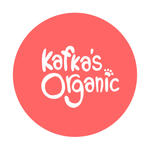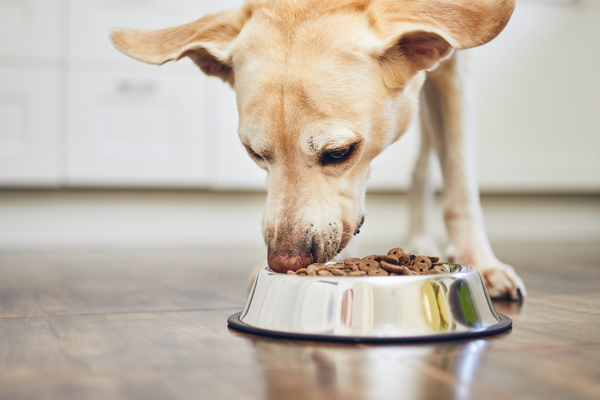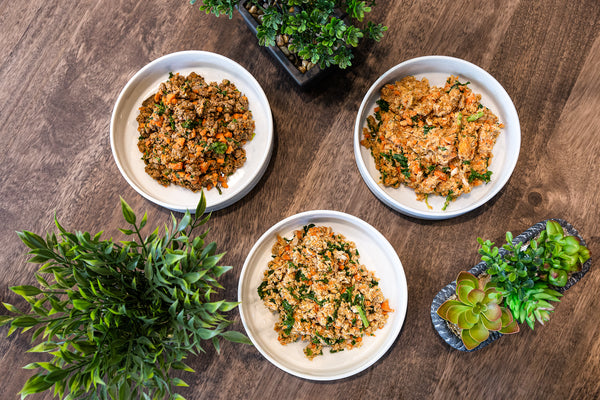Raw Dog Food vs. Kibble vs. Fresh Dog Food

The standard belief is that high-quality dry food is a perfectly acceptable option. However, there are an increasing number of experts and dog parents who are considering healthier, less processed alternatives such as raw food diets and cooked pet food. It is important to understand that all three preferences have their own pros and cons and that a diet that works for one dog may not work for another. We're here to help you tackle the issue of proper pet nutrition!
What do the best raw dog food diets consist of?
Most people instantly think of a raw steak when, in fact, the optimal raw food diet is a complicated mixture of a number of raw ingredients, including meat, whole eggs, crushed or whole bones, fruits, vegetables, and supplements. The meat part of this diet doesn't refer to just giving your dog a juicy, raw steak. Instead, you need to combine the right portions of things like organ or muscle meat. Feeding dogs raw food has gained more popularity in recent years as owners search for ways to boost their pets’ health and begin to question the long-term healthfulness of feeding highly processed dry foods.
What are some of the benefits vs. risks associated with raw feeding?
Minimally processed dog food
Raw diet advocates highlight that a dog’s body is meant to digest food in raw form and that it meets their unique dietary needs better than any other feeding method. The argument is that they will get important nutrients more easily and the benefits will be obvious quickly. Dogs that are switched onto raw diets will see improved health in the form of shinier coats, increased energy levels, cleaner teeth, and smaller stool.
Nutritional deficiencies in raw dog food diets
However, raw dog food is associated with many risks for both pets and humans.
Many studies have revealed that there can be nutritional imbalances when raw diets are not formulated properly. For instance, one study in 2001 showed improper Ca/Phos ratios, and deficiencies in various important vitamins for dogs, including vitamin E.
Unfortunately, doing research about raw food diets for dogs is extremely time-consuming and confusing because the volume of information (and many different opinions found in it). That means that many people who try to feed their dog raw food often do it improperly, which can be anything but beneficial to a dog’s health.

Commercial raw food preparations
Well there’s a solution to that, right? Just purchase commercial raw food! The trouble with that option is many commercial raw dog food brands use meat byproducts and ingredients that are not human grade dog food. This means your dog could be eating food that was deemed inedible for humans, such as raw meat from 3D animals (dead, dying or diseased). Alternatively, the meat could be handled improperly, which could lead it to be contaminated with dangerous bacteria picked up from the animal hide, slaughter method, evisceration, or packing processes.
Handling and safety concerns of raw diets for dogs
The other critical issue with feeding raw food is the handling and safety concerns once in the home. If important precautions to take when handling raw food are not followed it can lead to health issues for the non-furry members of the household as well.
If the purchased raw ingredients or commercially prepared raw dog food is not human-grade and contains harmful or high levels of bacteria such as Salmonella species, the possibility of cross-contamination can be high. A veterinary study showed that 86% of products contained potentially dangerous bacteria. Even if the bacteria isn’t dangerous for your dog, it could be dangerous for you and your family or vice versa, and it can be transmitted between pets and humans. If there are children, elderly, or immuno-compromised, they are at higher risk for diseases caused by these bacteria, and it can be transmitted simply by letting your dog lick your face!
As you can see there are many concerns to consider before deciding that feeding a raw diet is the best alternative. And although many experts and dog enthusiasts swear by a raw diet, highly reputable sources like the American Veterinary Medical Association (AVMA) and the U.S. Food and Drug Administration (FDA) have come out against the use of raw ingredients for commercial pet food.
AVMA’s official position about the issue states: “The AVMA discourages the feeding to cats and dogs of any animal-source protein that has not first been subjected to a process to eliminate pathogens, because of the risk of illness to cats and dogs as well as humans.”
Feeding your pup kibble: pros vs. cons
The convenience and affordability of kibble
Kibble is the more commonly fed diet in North America by most pet owners because of its convenience and affordability. Kibble is widely available, relatively cheap, and is easy to store because of it’s long shelf life. Many dry pet food manufacturers are well-established in the pet food industry which reassures owners that these foods are safe for their dogs.
Dry dog foods & Dilated Cardiomyopathy (DCM)
However, many big brand commercial dog foods, although advertised under various names, are ultimately owned by a handful of large corporations such as Mars, Nestle and Smuckers among others. Processed pet food also has a history of recalls including the famous 2007 melamine-related recall which was what initially led to pet parents seeking healthier food for their dogs.
More recently in 2019 the FDA investigated over 500 reports from pet owners which showed a possible connection between certain brands of grain-free dry dog foods based heavily on legumes like lentils or peas and potatoes and the development of canine dilated cardiomyopathy (DCM).
Popular kibble brands like Acana, Taste of the Wild, Blue Buffalo, Fromm, Natural Balance, Orijen and Rachael Ray Nutrish among others were linked to the highest numbers of DCM cases.
Preservatives & additives in kibble brands
What many dog owners also may not realize is that the convenience of kibble comes at a price as it requires harmful preservatives and additives to keep it shelf stable. Dry food is also processed at extremely high temperatures which diminishes most of the nutrition in whole ingredients. Artificial additives need to be added to then compensate for the nutrients lost in processing.
Storage mites in dry dog food and dog food allergies
Although preservatives are used to keep kibble shelf stable, actually most kibble does not store well. Once a bag of dry dog food is opened, kibble can actually experience growth of mold or mites. Several studies have found that dry food contains mites which can reproduce under storage, leading to allergens in the food.
Heavy processing changes the nutrition in dry dog food
Lastly, heavy processing such as extrusion causes molecular changes in ingredients that can render them at the least allergenic and at the worst carcinogenic. A dog’s immune system doesn’t always naturally recognize these foreign molecular structures, because they don't look like food, and can develop an immune response against them. Many pets have developed food allergies on commercial pet food which is one of the main reasons people are looking for healthier dog food alternatives. Kibble may be formulated to meet a dog’s basic nutritional requirements, but it is by far the optimal choice.
Now you probably don’t know what to do because you don’t want to go the kibble route but raw also doesn’t sound like a safe choice either. You don't need to start worrying yet... there is an alternative we’re excited to talk about.
What is gently cooked, fresh dog food and how does it benefit your dog?
Gently cooked fresh dog food is just what it sounds like, wet food made from whole, human-grade ingredients, and cooked at low temperatures similar to how you cook your own homemade meals. Not only is fresh food a healthy option for most dogs and life stages, it's also picky eater proofed! Here at Kafka’s, we’re experts on providing owners with options for tasty natural dog food and fresh pet meals.
We start by ensuring all of our recipes are formulated based on AAFCO standards and reviewed by Board Certified Vet Nutritionists. Next, we source many of our ingredients locally from small businesses in B.C. (or from ethical sources in North America). All of these ingredients are prepared professionally in our human-grade kitchen facility and cooked at low temperatures to ensure the ingredients keep their nutritional value. We package and freeze the meals right away so that we NEVER need to use harmful preservatives or additives.
What benefits should you expect to see if you switch your dog to a natural, fresh food diet like Kafka’s Organic?
1. Better poops
Dogs eating fresh, cooked pet food often experience improved consistency and frequency of their bowel movement. Plus, it can decrease the odour and size of stool.
2. Better hydrated
Kibble or other dry diets can leave your dog dehydrated, but there is a high moisture content in Kafka’s Organic pet meals. This helps overall kidney functions and reduces unnecessary strain on the organ, and possibly even prevent old-age kidney issues in the future.
3. Increased energy levels
Many dog owners see an increase in energy in their furry friend. This is because our fresh pet meals are formulated to give dogs proper nutrition that is optimal for their bodies. Even overweight dogs, senior dogs, and dogs with mobility issues can get an energy boost!
4. Helps weight management
Since dogs are known to have higher energy levels when eating fresh pet meals, proper exercise routines are more easily implemented. Not only that, but fresh food provides a more long-lasting feeling of fullness.
5. Great taste!
For many pups that are picky, their refusal to eat comes from disliking the ingredients listed in commercial diets. If they are eager for table scraps but turn up their nose at kibble, then fresh human-grade food like Kafka's is a picky eater pet food that is sure to be a tasty surprise for them!
Learn more about Kafka's fresh pet food
Why fresh dog food is a healthier option for your pup
We’ve found fresh food is a great alternative or supplement for owners who want their pets to eat minimally processed, real food.
Fresh food diets ensure pets are consuming nutritious vegetables and superfood supplements in balanced proportions and are a healthy dog food option for most pets. As many raw diets only contain meat, supplementing with cooked meals ensures that your pet is also getting important vitamins, minerals, and antioxidants present in whole ingredients.
Below is a quick list of some superfood ingredients included in all of Kafka's wet dog food recipes. You can also use this as a guide to help decide which vegetables and proteins to include in your dog's fresh food diet
-
Sweet potatoes - these root veggies are packed with fiber, vitamins, and antioxidants a high-quality carb for keeping your pup regular!
-
Raw carrots - great for teeth and gum health, as well as eyesight (thanks to those powerful beta-carotenes), and adds a crunch that your dog will love!
-
Egg Shell Powder - There can be as many as 27 vital nutrient elements in a single eggshell, providing nearly as much nutrition as crushed animal bones!
-
Greens such as Kale - including a type of fresh greens can help prevent cancer in pups. Kale is nutrient-dense and packs quite a punch in this department, and organic kelp
-
Omega-3 Fish Oil, Organic Flaxseed Oil, and Cod Liver Oil
-
A Vitamin and Mineral blend - it's important to cover your bases for any missing nutrients in fresh food by including a vitamin premix such as this one. Pro Tip - Ground eggshells are a great source of calcium for your pup
Ready to start your pup’s #FueledbyFresh journey? Check out our feeding calculator to see how much fresh food is right for your favourite furry pal.

Why choose Kafka's Organic?
Kafka’s Organic is a woman-led startup based in Vancouver, BC that provides fresh pet food delivery of minimally processed fresh meals for both dogs and cats. Our pet meals are a great alternative for owners who are currently unhappy with their dry food or raw dog food options in Vancouver. All Kafka’s Organic recipes are made with locally-sourced high quality ingredients without any preservatives or additives. They are frozen to keep fresh & suitable for pets with allergies, sensitive tummies, and picky eaters. Learn more.







Leave a comment